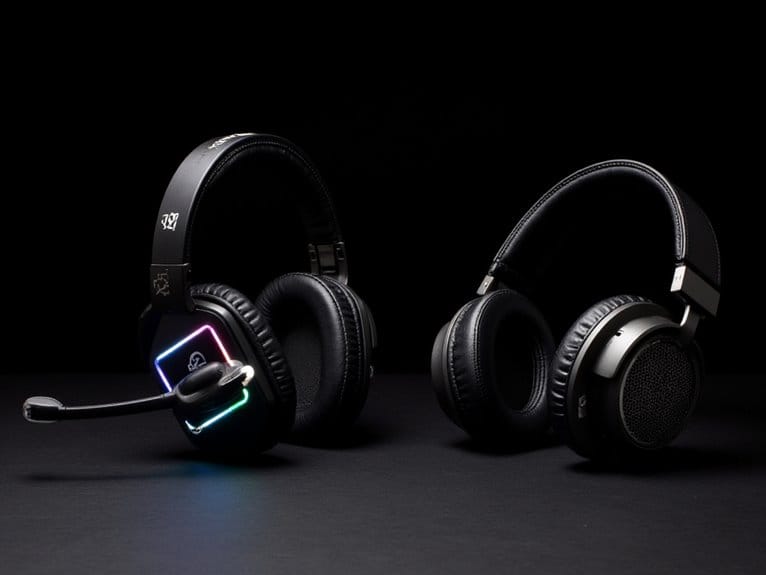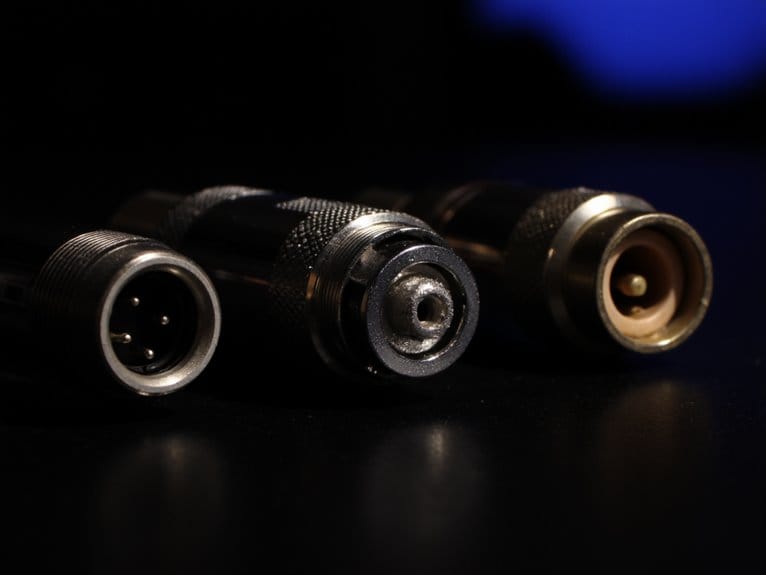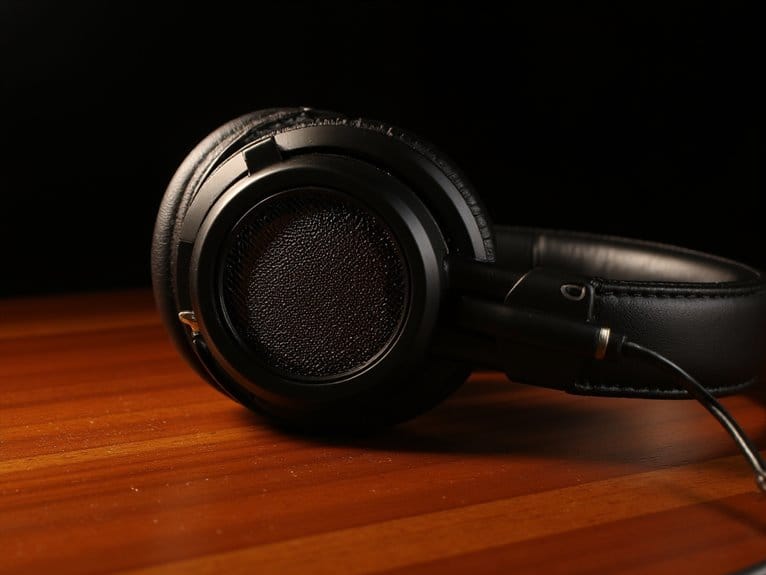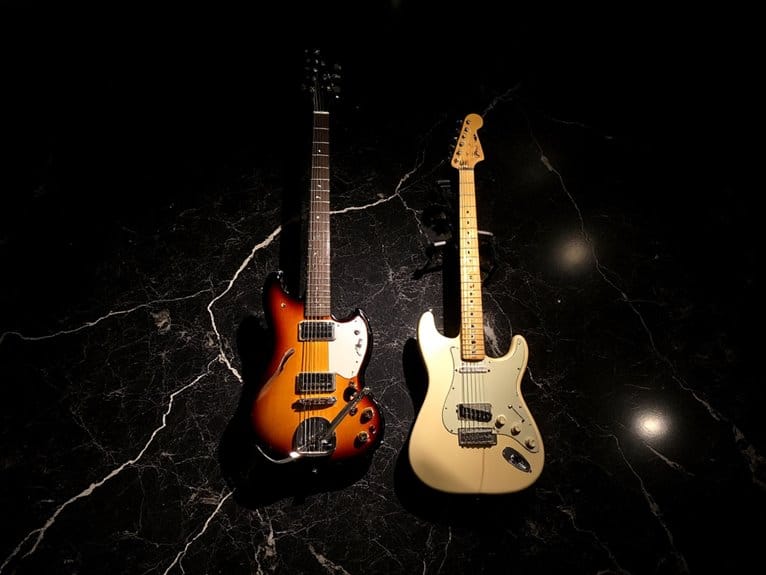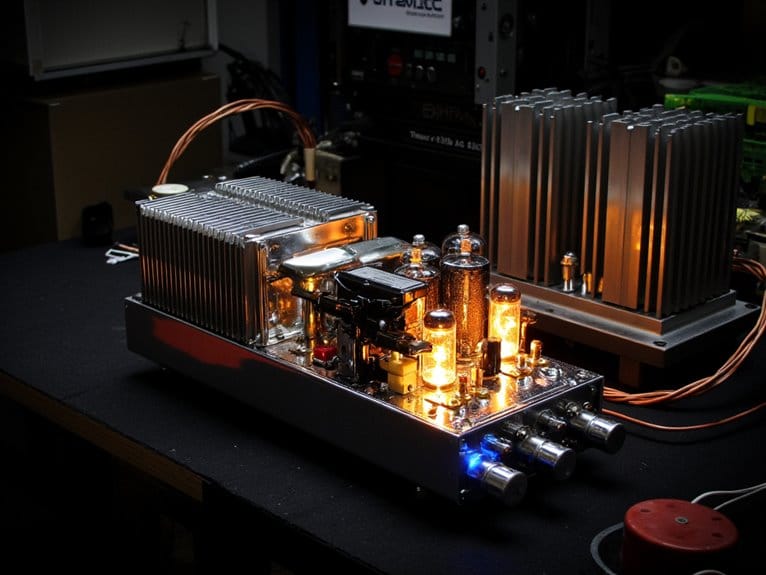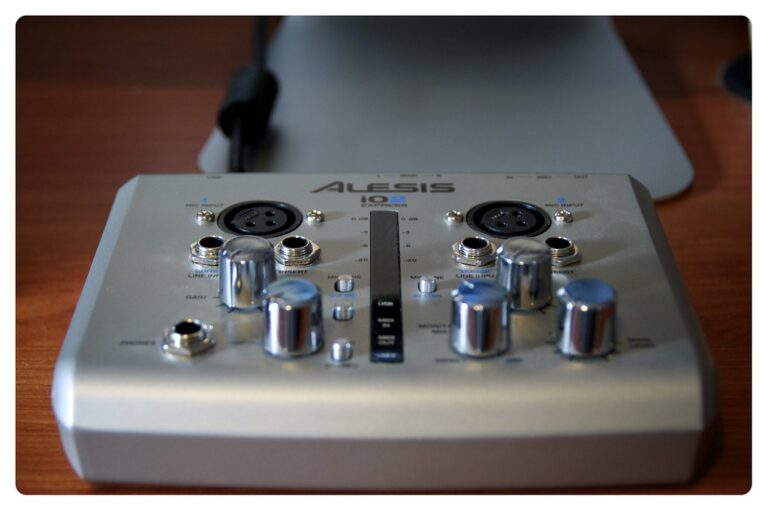Gaming Headphones Vs Studio Headphones: Key Differences
You’ll find that gaming headphones prioritize immersive experiences with boosted bass frequencies, integrated microphones, and spatial awareness features, while studio headphones deliver flat, neutral sound reproduction for accurate audio mixing without built-in mics. Gaming models typically cost less upfront, around $60, but may require frequent upgrades, whereas studio headphones start at $150 and offer long-term value through superior build quality and timeless audio fidelity that professionals demand for critical listening work.
We are supported by our audience. When you purchase through links on our site, we may earn an affiliate commission, at no extra cost for you. Learn more.
Notable Insights
- Gaming headphones boost bass and treble for immersion, while studio headphones provide neutral, uncolored audio reproduction.
- Gaming models include integrated microphones for communication, whereas studio headphones are designed without mics for audio purity.
- Studio headphones feature flat frequency response for accurate mixing, while gaming headphones prioritize spatial awareness and soundscapes.
- Gaming headsets start around $60 with immediate features, while studio headphones begin at $150 for long-term value.
- Gaming headphones offer wireless capabilities and RGB lighting, while studio models focus on timeless audio fidelity.
Sound Profile and Audio Performance Differences
The fundamental difference between gaming and studio headphones lies in their sound philosophy, where studio models prioritize neutral, uncolored audio reproduction while gaming headphones deliberately manipulate frequencies to enhance your gaming experience.
Studio headphones like Beyerdynamic’s DT 880 PRO feature a flat, linear frequency response that reproduces audio exactly as recorded, ensuring you hear every detail with surgical precision for mixing and mastering work. Professional models like the Sony MDR7506 utilize 40mm neodymium drivers to ensure flat frequency response across the entire 10Hz-20kHz range for accurate sound reproduction. High-quality studio headphones often feature carbon fiber dome drivers that provide exceptional fidelity and instrumental clarity for critical listening applications.
Gaming headphones employ a completely different sound signature, boosting bass frequencies to add punch to explosions and emphasizing treble to sharpen directional cues like footsteps or gunfire. The DT 990 PRO offers balanced enhancement with slightly boosted bass and treble frequencies, making it an ideal choice for gaming immersion while maintaining audio quality.
This enhanced frequency response creates a more exciting, immersive soundscape that compensates for game audio inaccuracies while prioritizing spatial awareness over clinical accuracy. Gaming headphones increasingly deliver detailed sound signatures similar to traditional headphones, though wireless convenience may compromise some audio fidelity compared to their wired counterparts.
Design Features and Build Quality Comparison
Beyond their contrasting audio philosophies, gaming and studio headphones reveal dramatically different design approaches that reflect their intended environments and usage patterns.
You’ll notice gaming headphones prioritize microphone integration, featuring built-in or detachable boom mics for multiplayer communication, while studio models deliberately omit this feature to maintain audio purity.
The build materials tell another story entirely – gaming headphones employ reinforced plastics and metal components designed for frequent handling and transport, whereas studio variants use lighter materials optimized for extended comfort during long mixing sessions.
Gaming headphones prioritize durability with reinforced construction, while studio models emphasize lightweight comfort for marathon professional sessions.
Gaming models often showcase bold aesthetics with LED lighting and futuristic styling, contrasting sharply with studio headphones’ minimalist, professional appearance that fits seamlessly into recording environments.
Intended Use Cases and Target Users
When examining who actually benefits from each headphone category, I’ve found that the fundamental divide comes down to accuracy versus enhancement.
Studio headphones serve audio professionals who need uncolored sound reproduction for mixing, mastering, and critical listening, while gaming headphones cater to players seeking immersive experiences with boosted bass, virtual surround sound, and integrated communication features.
Your user experience will differ dramatically between these categories, depending on your priorities.
If you’re a music producer, sound engineer, or audio creator, you’ll appreciate studio headphones‘ flat frequency response that reveals every flaw in your mix.
However, if you’re a gamer prioritizing spatial awareness and team communication, gaming headsets deliver the enhanced soundstage and built-in microphones that improve your competitive performance.
Professional studio headphones typically feature wide frequency response ranges from 20 Hz to 40 kHz, capturing detailed audio nuances that gaming headphones often sacrifice for enhanced bass and virtual effects.
Unlike gaming headphones that enhance bass and treble for entertainment, mixing headphones deliver flat, accurate frequency response that prevents coloration during professional audio work.
Price Points and Value Considerations
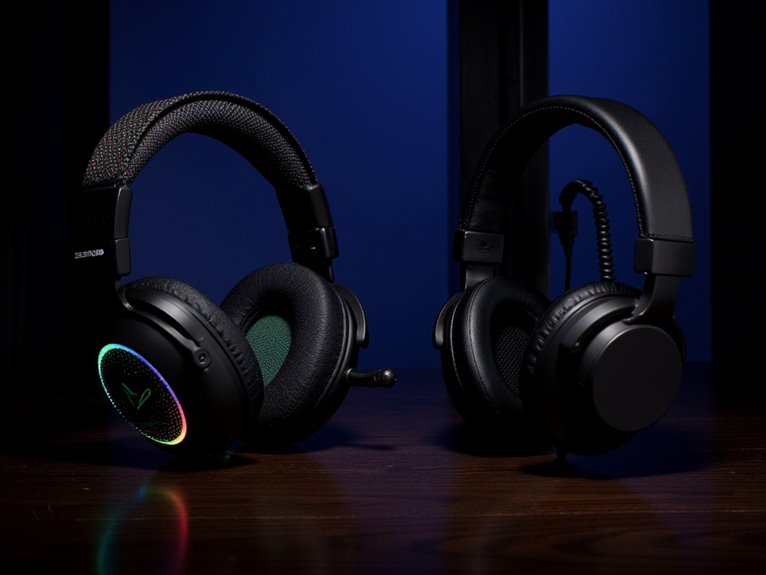
While budget considerations often drive headphone purchasing decisions, I’ve discovered that the price-to-value relationship between gaming and studio headphones isn’t as straightforward as you’d expect.
Gaming headsets typically start around $60, offering integrated microphones and gaming-optimized features that create immediate value for your dollar. However, your price sensitivity should account for market trends showing gaming headsets often require more frequent upgrades due to rapid technology changes, potentially increasing lifetime costs despite lower entry points.
Studio headphones command higher initial prices, starting around $150, but their durability and timeless audio fidelity often provide better long-term investment returns.
Sales frequently reduce gaming headset costs by 20-35%, though studio models maintain value stability that justifies their premium positioning in professional markets.
Additional Features and Functionality
Your budget considerations naturally lead to examining what features you’re actually paying for, and I’ve found that gaming and studio headphones pack dramatically different functionality into their respective price points.
Gaming headphones excel in wireless capabilities, offering Bluetooth connectivity alongside customizable RGB lighting that’ll either impress your friends or annoy your parents.
When examining microphone types, gaming models include built-in options for team communication, while studio headphones require separate, higher-quality external microphones.
The feature gaps become apparent when comparing:
- Audio Processing: Gaming headphones support surround sound software and customization
- Communication: Built-in microphones versus external microphone compatibility
- Convenience Features: Wireless connectivity and accessory support versus purely wired functionality
Studio headphones prioritize neutral sound reproduction and lightweight portability over flashy extras. Modern wireless models supporting Bluetooth 5.0 or higher deliver enhanced range and stability that can benefit both gaming sessions and studio monitoring when wireless functionality is desired.
Frequently Asked Questions
Can I Use Studio Headphones for Gaming Without Compromising Performance?
You can use studio headphones for gaming without compromising core performance. They’ll deliver excellent sound quality and comfort levels, though you’ll miss gaming-specific features like integrated microphones and virtual surround sound enhancements.
Do Gaming Headphones Work Well for Music Production and Audio Editing?
You can use gaming headphones for basic music production, but they’ll compromise music quality due to boosted frequencies and colored sound. While comfort levels are adequate, you won’t achieve professional-grade accuracy.
Which Type Lasts Longer With Heavy Daily Use?
For durability comparison with heavy usage frequency, you’ll find studio headphones outlast gaming headsets. They’re built with premium materials and reinforced stress points, while gaming headsets often compromise build quality for features.
Are Wireless Gaming Headphones as Good as Wired Studio Headphones?
Wireless gaming headphones can’t match wired studio headphones’ sound quality due to compression and digital transmission limitations. You’ll also deal with battery life concerns that interrupt usage, unlike wired models’ consistent performance.
Can I Add a Separate Microphone to Studio Headphones for Gaming?
You can definitely add a separate microphone to studio headphones for gaming. Microphone compatibility depends on your setup, but USB or 3.5mm mics work well, often delivering superior gaming performance compared to built-in headset microphones.
On a final note
You’ll find that your choice ultimately depends on your primary use case, budget constraints, and personal preferences regarding audio signature. If you’re primarily gaming with friends online, gaming headphones offer better value through integrated microphones, spatial audio optimization, and comfort during extended sessions. However, if you’re serious about audio production, content creation, or simply want superior sound quality for music listening, studio headphones provide better accuracy, build quality, and long-term investment value despite requiring separate microphone solutions.

